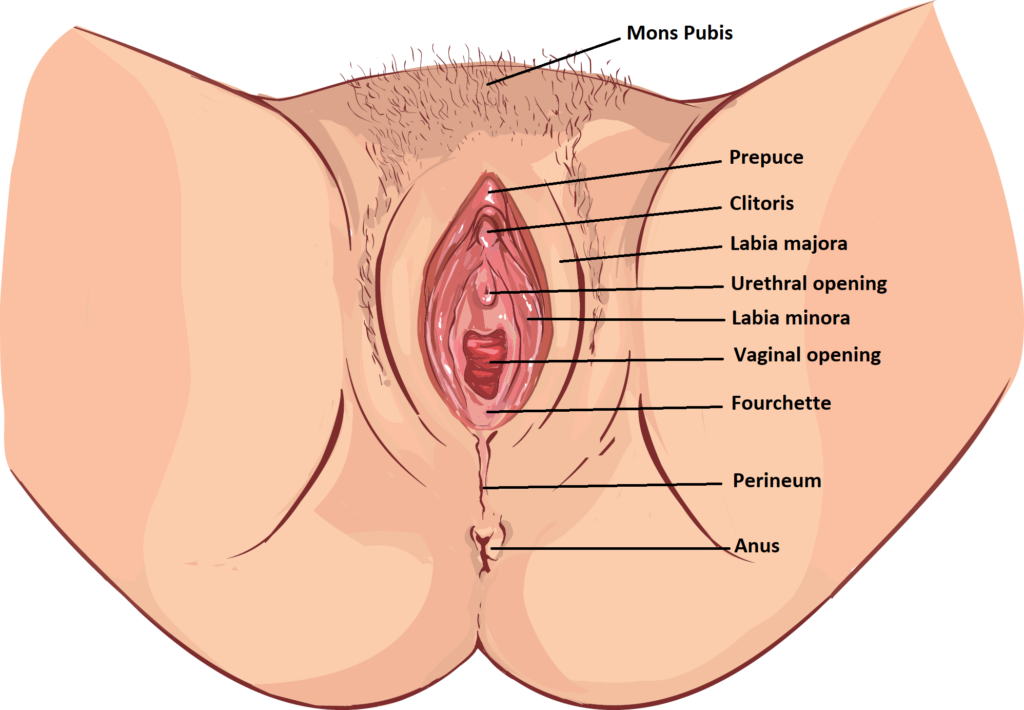 Guest blogpost by Amadea Kezar M.Sc. PT, Pelvic health physiotherapist:
Guest blogpost by Amadea Kezar M.Sc. PT, Pelvic health physiotherapist:
When was the last time you looked at your vulva, if ever? If you can’t recall you’re in good company. Few of us have investigated but it’s time we did. Vulvar exams are important in order to spot changes early and to be able to clearly describe them to your healthcare providers.
In my work I often assist women in “taking a peek” and I understand if it feels daunting. Historically women really haven’t been encouraged to have a great relationship with their vulva, but I assure you demystifying this area is an important step toward ownership and better pelvic health.
So let’s do it together?!
Just so we’re oriented, the vulva is the external genitalia or what we can see easily with our mirror. The vagina is the canal inside the opening. Now we’re really ready.
- We’re going to handsy so use clean dry hands.
- Position yourself as I am above, allowing the knees to fall outward. Place pillows under your knees if needed and hold a mirror in one hand.
- Starting at the “Mons Pubis”, over the pubic bone where there may be hair, observe labia majora and scan the skin down to the anus.
- Are there white, red or patchy areas?
- Are there cuts, sores or swelling?
- Is there thickening of the skin like new lumps, growths, moles, or warts?
- Apply gentle pressure to the skin with your free hand to detect any tenderness, itching or lumps that may be unseen and compare both sides.
- Use that hand to separate the labia and continue to look and feel.
- Check the clitoris and the surrounding area. You should be able to freely pull the prepuce back exposing more of the clitoris without discomfort.
- Examine the skin around the vaginal opening.
- Check the labia minora. Has their size changed?
- Continue down to the perineum and finally the anal opening.
It’s fine if you have to move around a bit to find better light or a better angle. The point is to have a good look so don’t be shy to pull out a flashlight. A girl’s got to see!
If you do find something out of the ordinary contact your doctor. It’s better to know than to not.
Try to do it once a month, especially if you’re experiencing pain or itching in the area. A great time to do it is in a dry tub just before taking a shower if finding the time is a challenge.
Viva La Vulva!

Image iStock by Getty Images owned and labelled by Amadea Kezar 2020
 Amadea Kezar, M.Sc. PT, Pelvic health physiotherapist, is a clinician, speaker and owner of ASK Physiothérapie, a pelvic health clinic in Montreal, Canada. For more info visit www.askphysiomontreal.com
Amadea Kezar, M.Sc. PT, Pelvic health physiotherapist, is a clinician, speaker and owner of ASK Physiothérapie, a pelvic health clinic in Montreal, Canada. For more info visit www.askphysiomontreal.com
Amadea Kezar is a certified physiotherapist and member of the Ordre Professionel de la Physiothérapie du Québec (OPPQ). She holds a Masters degree in physiotherapy from McGill University and is specialized in Pelvi-Perineal Re-education for men and women. In addition to treating urinary, ano-rectal and pre-postnatal dysfunction she has a particular interest in persistent pelvic and genital pain.




